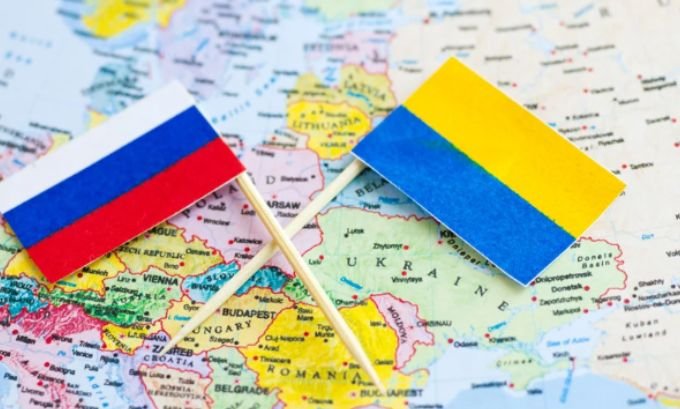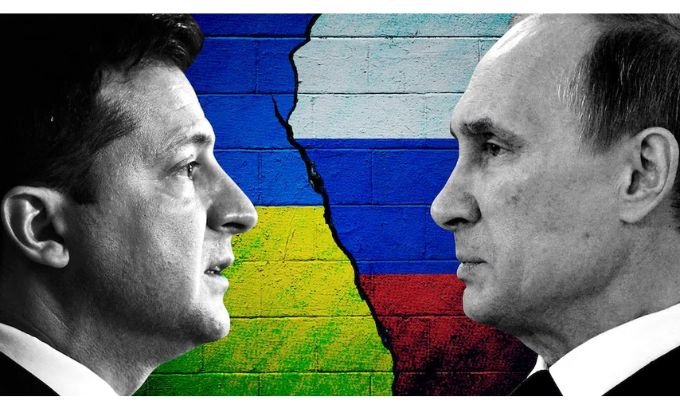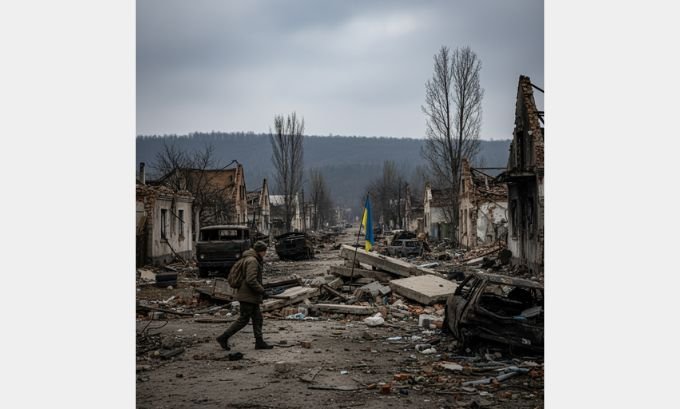The Russia-Ukraine war stands as Europe’s most devastating military conflict since World War II. When Russian forces crossed Ukraine’s borders on February 24, 2022, they launched what would become a defining geopolitical crisis of our time. Understanding who bears responsibility for starting this war requires examining both the immediate invasion and the deeper tensions that preceded it.
The conflict has displaced millions, reshaped international alliances, and disrupted global supply chains. While the roots of this crisis stretch back decades, the question of who initiated the current war has a clear answer supported by international law and global consensus.
This examination will trace the conflict’s origins, analyze competing narratives, and clarify responsibility for one of the most consequential wars of the 21st century.
Table of Contents
The Historical Foundation of Conflict
Soviet Legacy and Ukrainian Independence
Ukraine’s path to independence began with the Soviet Union’s collapse in 1991. After centuries under Russian and Soviet rule, Ukraine emerged as a sovereign nation with its own democratic aspirations. This newfound independence created the first major fault line between the two countries.
The dissolution of the USSR left Russia grappling with the loss of territories it considered integral to its sphere of influence. Ukraine, with its strategic location, agricultural resources, and industrial capacity, represented a significant portion of what Moscow viewed as its natural domain.

Ukraine’s Westward Turn
Throughout the 1990s and 2000s, Ukraine gradually strengthened ties with Western institutions. The country pursued closer relationships with the European Union and expressed interest in NATO membership. These developments alarmed Russian leadership, who viewed NATO expansion as a direct threat to their security interests.
The 2004 Orange Revolution marked a pivotal moment when Ukrainian citizens successfully challenged a fraudulent election, installing a pro-Western government. This democratic uprising demonstrated Ukraine’s commitment to European values and further distanced the country from Russian influence.
The 2014 Crisis: A Turning Point
Crimea’s Annexation
The most significant escalation occurred in 2014 following Ukraine’s Euromaidan protests. After Ukrainian President Viktor Yanukovych fled the country, Russia rapidly annexed Crimea through a military operation that violated international law. This action marked the first time since World War II that a European nation had annexed territory from another by force.
The Crimean annexation established a dangerous precedent and demonstrated Russia’s willingness to use military force to prevent Ukraine’s integration with the West. International bodies, including the UN General Assembly, condemned the annexation as illegal.
The Donbas Conflict Begins
Simultaneously, Russia began supporting separatist movements in eastern Ukraine’s Donbas region. Armed conflict erupted between Ukrainian government forces and Russian-backed separatists, creating a frozen conflict that would persist for eight years.
This proxy war claimed over 14,000 lives and displaced hundreds of thousands of people. Despite multiple ceasefire agreements, including the Minsk Protocols, the conflict remained unresolved, serving as a constant source of tension between Russia and Ukraine.
Russia’s Stated Justifications
Security Concerns and NATO Expansion
Russian officials have consistently cited NATO’s eastward expansion as a primary motivation for their actions. Moscow argued that Ukraine’s potential NATO membership posed an existential threat to Russian security, creating an unacceptable military presence on their border.
President Vladimir Putin has repeatedly claimed that Western powers broke promises not to expand NATO eastward after German reunification. However, historical records show no such formal agreements existed, and NATO expansion occurred through the democratic choices of sovereign nations.
Protection of Russian Speakers
Russia has justified its interventions by claiming to protect ethnic Russians and Russian speakers in Ukraine. This narrative portrays Russia as defending oppressed minorities from Ukrainian persecution.
Independent observers and human rights organizations have found little evidence supporting claims of systematic persecution of Russian speakers in Ukraine. Before 2014, Russian was widely spoken and legally protected throughout the country.
Denazification Claims
Perhaps the most controversial justification involves Russia’s claim that it seeks to “denazify” Ukraine. This narrative portrays the Ukrainian government as dominated by neo-Nazis threatening Russian-speaking populations.
International experts and historians have overwhelmingly rejected these claims as propaganda. Ukraine’s president, Volodymyr Zelensky, is Jewish, and far-right parties have minimal political support in Ukrainian elections.
Ukraine’s Response and International Perspective
Defending Sovereignty
Ukraine has consistently maintained that Russia’s actions constitute unprovoked aggression against a sovereign nation. Ukrainian officials argue that their country has the right to choose its own foreign policy and security arrangements without external interference.
The Ukrainian government has framed the conflict as a struggle for independence and democratic values against authoritarian expansion. This narrative has resonated strongly with international partners who support Ukraine’s territorial integrity.
Global Condemnation
The international community has largely sided with Ukraine’s interpretation of events. The UN General Assembly has passed multiple resolutions condemning Russian aggression, with overwhelming majorities supporting Ukraine’s position.
Major international organizations, including NATO, the EU, and the G7, have imposed comprehensive sanctions on Russia while providing substantial military and economic aid to Ukraine.

The Full-Scale Invasion of 2022
February 24: The War Begins
Despite months of military buildup and diplomatic warnings, Russia launched a full-scale invasion of Ukraine on February 24, 2022. This operation went far beyond the limited conflicts in Crimea and Donbas, targeting major Ukrainian cities and attempting to overthrow the government.
The invasion involved over 150,000 Russian troops attacking from multiple directions. Russian forces targeted critical infrastructure, government buildings, and civilian areas, indicating an intent to subjugate the entire country.
International Legal Framework
Under international law, Russia’s invasion constitutes a clear act of aggression. The UN Charter prohibits the use of force against the territorial integrity or political independence of any state. Russia’s actions violated multiple international treaties and agreements.
The International Court of Justice has ordered Russia to cease its military operations, while the International Criminal Court has issued arrest warrants for Russian officials, including President Putin, for war crimes.
Consequences and Global Impact
Humanitarian Crisis
The war has created Europe’s largest refugee crisis since World War II, with millions of Ukrainians fleeing their homes. Thousands of civilians have been killed, and entire cities have been reduced to rubble.
International humanitarian organizations have documented extensive war crimes, including attacks on hospitals, schools, and civilian infrastructure.
Economic Disruption
The conflict has disrupted global supply chains, particularly for energy and food products. Europe has faced an energy crisis as it reduces dependence on Russian gas, while wheat shortages have threatened food security in vulnerable regions worldwide.
Geopolitical Realignment
The war has strengthened NATO unity and accelerated European defense integration. Finland and Sweden abandoned their neutrality to join NATO, while EU countries have significantly increased defense spending.
Frequently Asked Questions
Who officially started the Russia-Ukraine war?
Russia initiated the current war by launching a full-scale invasion of Ukraine on February 24, 2022. While tensions and limited conflicts existed since 2014, the current war began with this invasion.
Why did Russia invade Ukraine?
Russia cited preventing NATO expansion, protecting Russian speakers, and “denazifying” Ukraine as justifications. International experts widely view these as pretexts for territorial expansion and prevention of Ukrainian integration with the West.
What role did Crimea play in the conflict?
Russia’s illegal annexation of Crimea in 2014 marked the beginning of direct territorial aggression against Ukraine, establishing a precedent for the larger invasion eight years later.
Is NATO directly fighting in Ukraine?
NATO member countries provide military aid, intelligence, and humanitarian support to Ukraine but have not deployed combat troops or engaged Russian forces directly.
How has the war affected the global economy?
The conflict has caused energy price spikes, food shortages, supply chain disruptions, and contributed to global inflation as markets adjusted to the loss of Russian and Ukrainian exports.
Could the war spread beyond Ukraine?
While Russia has made threats against countries supporting Ukraine, the conflict has remained within Ukrainian borders. NATO’s Article 5 collective defense commitment serves as a deterrent against attacks on member states.
Understanding Responsibility in a Complex Conflict
The evidence overwhelmingly demonstrates that Russia bears responsibility for starting the current Russia-Ukraine war. While historical tensions and competing interests created the conditions for conflict, Russia’s decision to use military force against a sovereign neighbor crossed a clear line under international law.
The 2022 invasion represents an escalation of aggressive actions that began with Crimea’s annexation in 2014. Throughout this period, Ukraine consistently sought diplomatic solutions while defending its territorial integrity and democratic institutions.
The international community’s unified response reflects a broad consensus that Russia’s actions constitute unprovoked aggression. This support extends beyond traditional Western allies to include many nations that typically maintain neutral positions in international disputes.
As this conflict continues to reshape global politics and security arrangements, understanding its origins becomes crucial for preventing similar crises. The Russia-Ukraine war serves as a stark reminder that respect for sovereignty and international law remains fundamental to maintaining peace and stability in our interconnected world.

